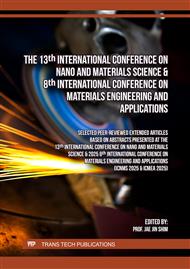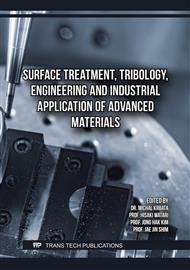p.41
p.57
p.65
p.73
p.85
p.99
p.105
p.115
p.121
Additive Manufacturing Section Image Features for Magnetic Processing Characteristics Prediction
Abstract:
Metal additive manufacturing encompasses multiple techniques, among which Selective Laser Melting (SLM) is extensively employed for fabricating highly complex, precise, and uniquely shaped metal parts. However, obtaining accurate product characteristics often requires complex experimentation, which can potentially damage the products. Thus, there is a need to develop an automated method for predicting product characteristics. To forecast these attributes, details related to metal additive manufacturing products were documented, including process parameters and textural features. These features were extracted from product’s longitudinal sectional images and layer-by-layer images, using the gray-level co-occurrence matrix (GLCM). Subsequently, machine learning (ML) models such as Support Vector Regression (SVR), XGBoost, and LightGBM were employed to predict product properties and compare their performance. The experimental results indicated stronger correlations between process parameters and textural features in longitudinal section images compared to layer-by-layer ones. Moreover, the models demonstrated high predictive accuracy, particularly XGBoost and LightGBM, with R² score approaching 0.9 for all properties. These findings highlight the superiority and feasibility of the proposed approach. Furthermore, this method shows potential for accurately predicting a variety of product properties, fulfilling the needs of multiple application scenarios.
Info:
Periodical:
Pages:
99-104
Citation:
Online since:
June 2025
Price:
Сopyright:
© 2025 Trans Tech Publications Ltd. All Rights Reserved
Share:
Citation:



